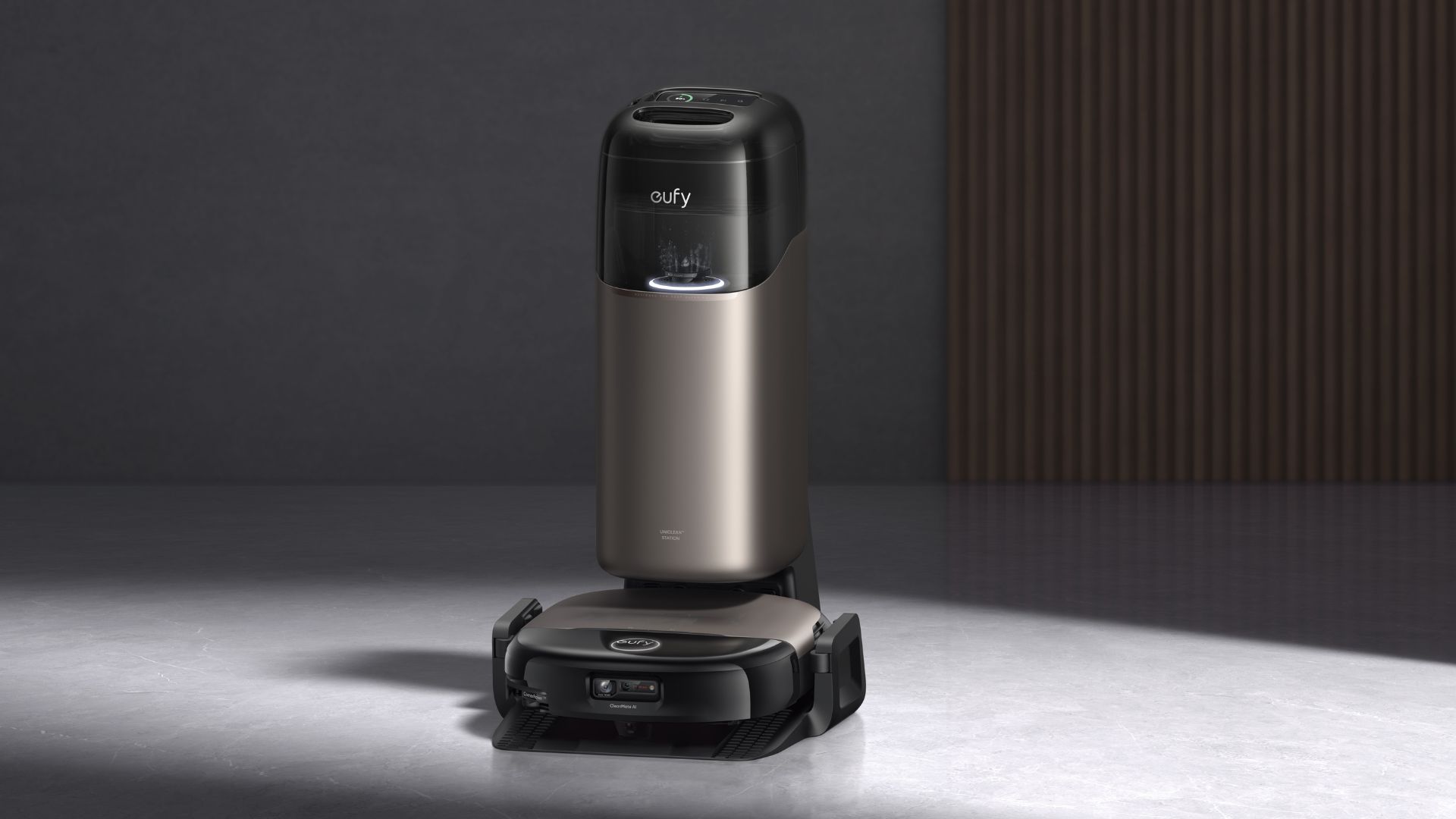Tom's Guide Verdict
The future of smartwatches is being connected, but the Apple Watch Series 3 doesn't quite deliver on that promise. Get the non-LTE model instead.
Pros
- +
Excellent fitness-tracking features
- +
Faster Siri
- +
LTE is convenient while you're working out
- +
Apple Music streaming
Cons
- -
Cellular activation issues
- -
Short battery life when connected to cellular
Why you can trust Tom's Guide
I've owned multiple iPhones, iPads, iPods and MacBooks over the past decade. I wore a first-generation Apple Watch and then a Series 2. The Apple Watch Series 3 with LTE is the first Apple device I've used that didn't just work out of the box. And while I did eventually get it running, other issues — as well as its high price — make this connected watch a tougher sell than the non-LTE version.
While I didn't love the cellular Series 3, the Bluetooth model is one of the best smartwatches and even our top pick among the best cheap smartwatches. It's also one best fitness trackers you can buy, if you're on the hunt for a workout-oriented wearable. Our Apple Watch Series 3 vs. Fitbit Charge 4 face-off details the benefits you'll get with the Apple smartwatch over a traditional fitness tracker.
With watchOS 7, you'll still get the latest software features without having to splurge on a $399 Apple Watch Series 6, or $279 on the Apple Watch SE, too.
See our Apple Watch SE vs. Apple Watch 3 and Apple Watch 6 vs. Apple Watch 3 face-offs for advice on whether you should upgrade.
The good news? With the release of the Apple Watch Series 7 later this fall, Apple announced that the Apple Watch Series 3 will remain on sale, starting at $199.
The promise — and reality — of LTE
A smartwatch aims to put easy access to your smartphone on your wrist. But cellular connectivity has the potential to remove your phone from the equation altogether. Early criticism of the Apple Watch included that it leaned too heavily on the phone for basic tasks. Software updates and faster processors have made that less of an issue; now, the watch can run apps natively and access Wi-Fi networks that your iPhone has connected to in the past. But it still requires your phone to be its relay device for phone calls and notifications, and it can't do much when your iPhone is out of range and there are no known Wi-Fi networks around.

The LTE Apple Watch Series 3 is designed to bridge that gap, but that's it. It's not an iPhone replacement. If you're expecting to leave your phone for extended periods of time and use the watch to handle all your tasks, you will be disappointed. That disappointment sinks in after you add up the costs — $399 for the 38-millimeter model or $429 for the 42-mm version, and then an extra $10 on your monthly cellphone bill so that the watch can draw from your data bucket. All that, and it can't even last a full day on its own.
But even though I knew the watch couldn't replace my iPhone, I still had high hopes. Those floated down to earth as soon as I unboxed the device.
Get instant access to breaking news, the hottest reviews, great deals and helpful tips.
Apple Watch Series 3 activation: A frustrating process
The Series 3 pairs to your iPhone the same way past generations did, with a dynamic image on the watch face that you scan with your iPhone camera. That part is just as seamless as usual. But then I got to the part where I had to activate the watch's cellular connectivity.
I eventually got my watch activated on AT&T's network, but it took a trip to my nearby AT&T store and the help of five customer service reps — four in-store and one over the phone — more than an hour to navigate the complicated setup process.
I ran into a myriad of issues when trying to activate the watch on my AT&T plan. A customer service agent couldn't help me figure out the problem over the phone, so I eventually paired the device to an Apple-provided iPhone 8 on T-Mobile to test it out.
I experienced some launch-weekend jitters with phone call reliability, where calls on the watch over LTE would fail, but those issues seem to have been resolved. (If you run into a similar problem, try deactivating the watch's data plan, and then reactivating and rebooting. That did the trick for me.) A look at Twitter and Reddit shows that other Series 3 buyers experienced the same early problems I did.
I eventually got my watch activated on AT&T's network, but it took a trip to my nearby AT&T store and the help of five customer service reps — four in-store and one over the phone — more than an hour to navigate the complicated setup process.
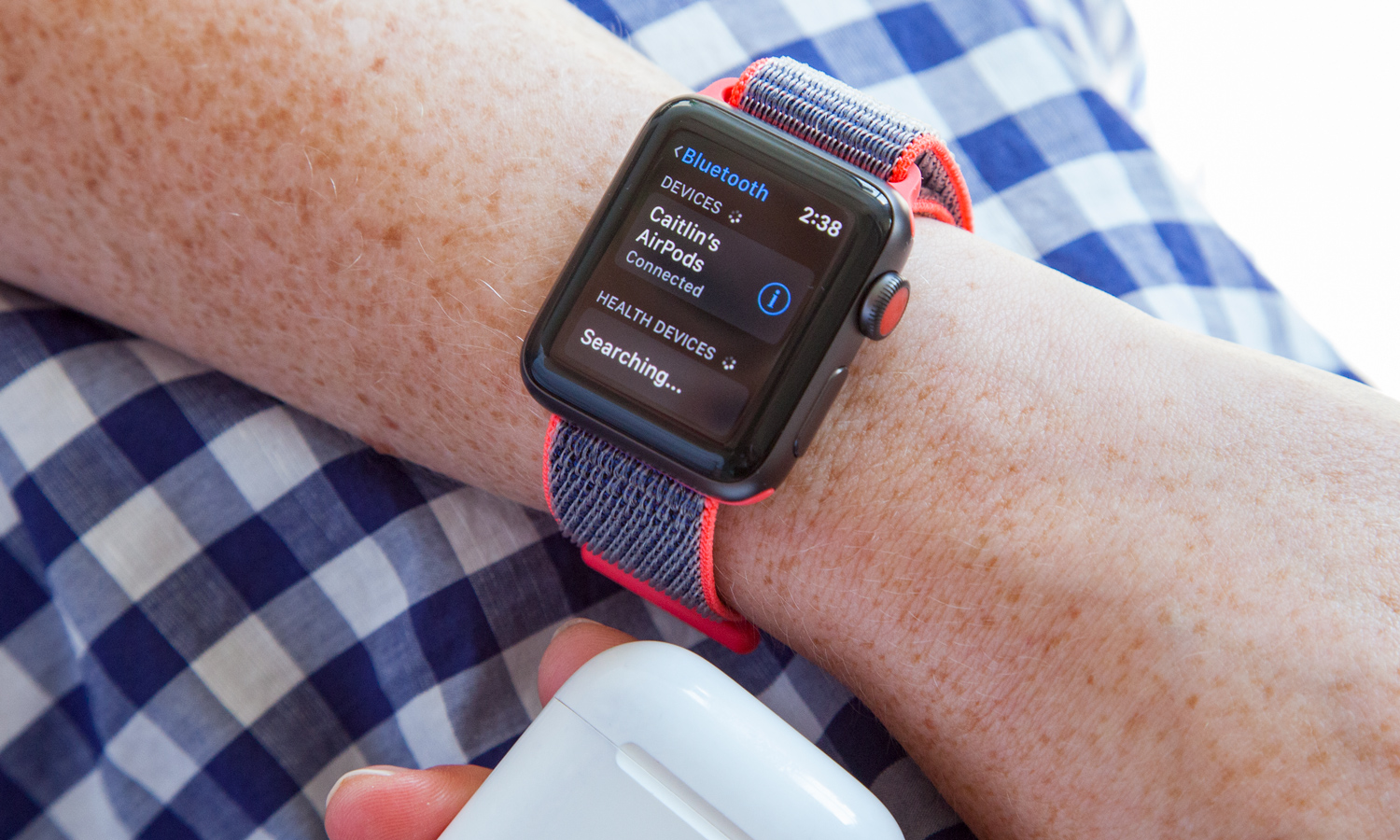
A watchOS update that Apple pushed out a few weeks after the Series 3's launch fixed a bug that affected the watch's ability to switch from Wi-Fi to cellular. The software update also added a manual setting in the Control Center, accessible by swiping up on the watch face, that lets you toggle among the iPhone's connection, a Wi-Fi network and the watch's own cellular connection.
MORE: Smartwatch buying guide
Before the update, you could connect to cellular only by putting your iPhone in airplane mode or leaving it out of Bluetooth range altogether. Now, if your watch gets hung up trying to connect to a Wi-Fi network, you can manually push it to connect to cellular.
Apple Watch Series 3 cellular connectivity: Battery killer
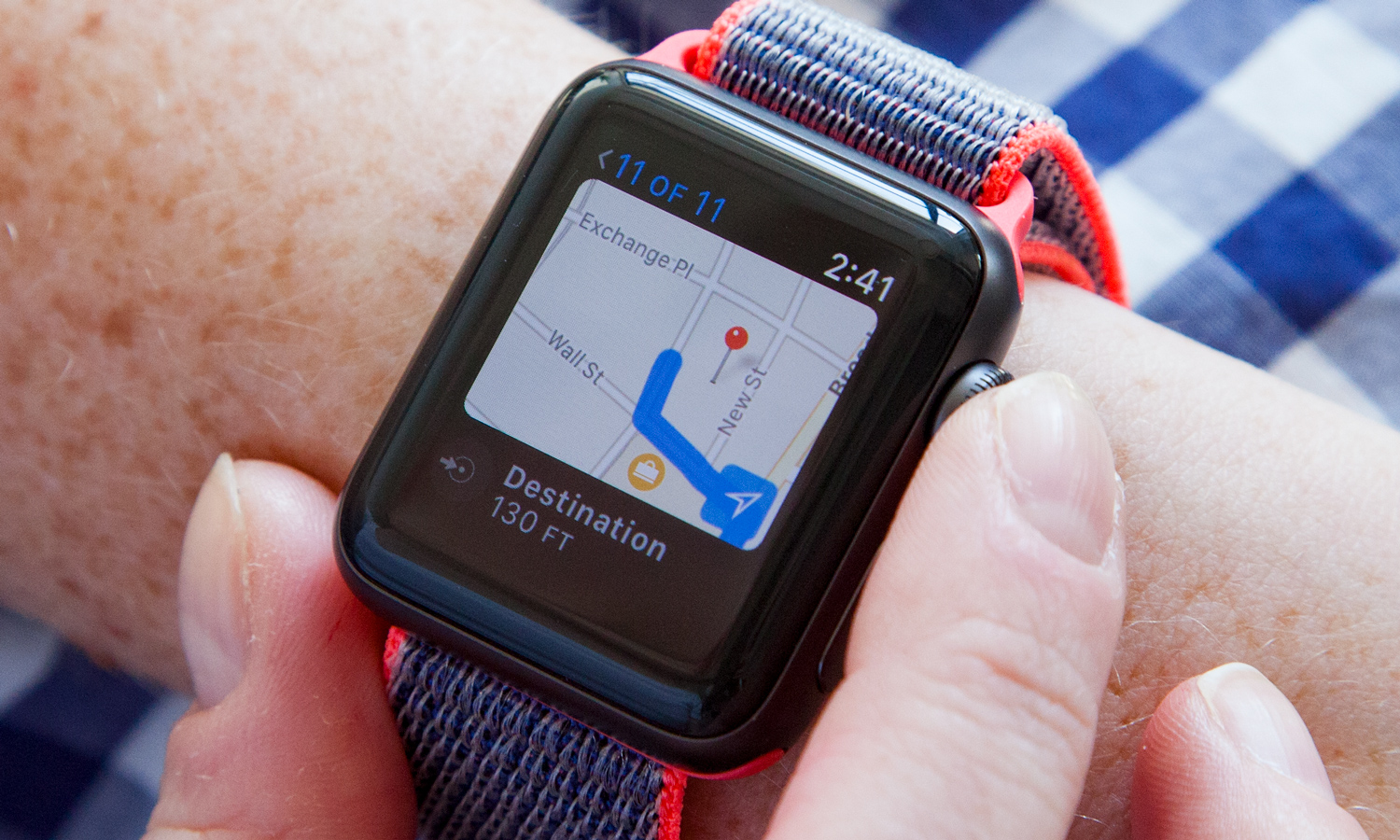
I quickly discovered the LTE Series 3's limitations when I left my iPhone at home. I started the day with a 3.5-mile run, during which I streamed Apple Music's Pop Workout radio station the entire 37 minutes. When I returned home to eat breakfast, I checked my watch battery. It had drained to 60 percent after running every battery-sucking feature simultaneously. I managed to squeeze another 12.5 hours out of the watch by not relying on it too heavily for the rest of the day.
These activities aren't battery killers on the Series 2 or Series 3 without LTE, but with the Series 3's constant cellular connection, you can forget about it lasting 18 hours on a charge. Simply being connected to a cell network will reduce the battery life with mixed use from 18 hours to about 8 hours.
That's why the watch is designed to rely on your phone's connectivity to keep its own cellular connection from draining the device — and why it's so important to have manual control over that connection.
Apple Watch Series 3 design: Unchanged, in a good way
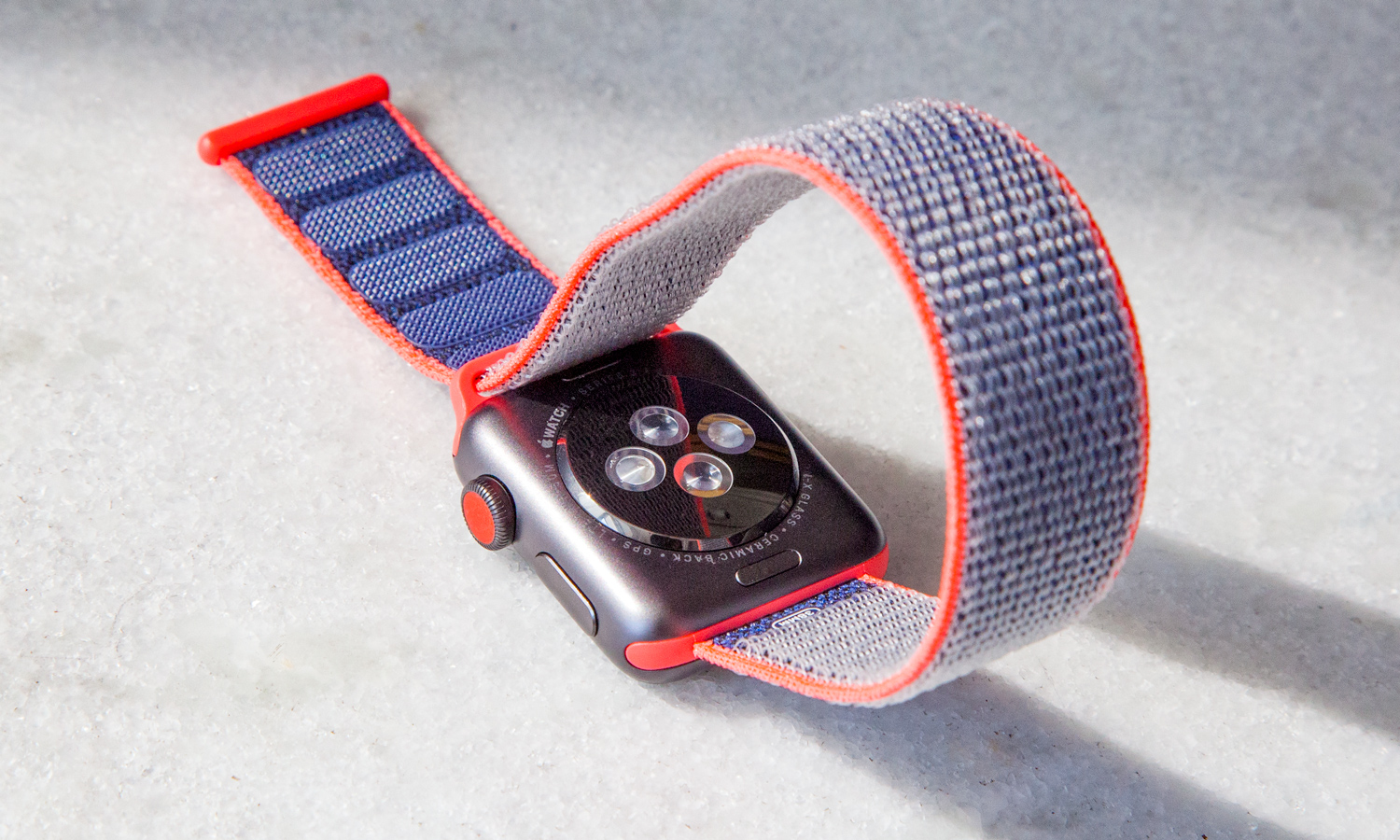
Apple's ability to put a cellular modem and bigger battery into the Series 3 without dramatically adding to its size is impressive. The watch is slightly thicker than the Series 2 — about two sheets of paper thicker, Apple says — but not noticeably so. The 38mm Apple Watch Series 3 is the only LTE smartwatch that looks good on my wrist. The Series 3 also comes in a larger, 42mm size for people with larger wrists.
The ultrabright, 1,000-nit OLED display has the same size and resolution as the previous models: 272 x 340 pixels on the 38mm model and 312 x 390 on the 42mm version. The screen is Ion-X glass on the aluminum models and sapphire crystal on the stainless-steel and ceramic versions. The aluminum variety comes in gold, silver and space gray, while the ceramic version is available in white and gray.
Basically, it's still one of the better-looking smartwatches on the market (yes, even though it's square).
- Fitbit Versa 3 vs. Apple Watch 3: Which smartwatch should you buy?
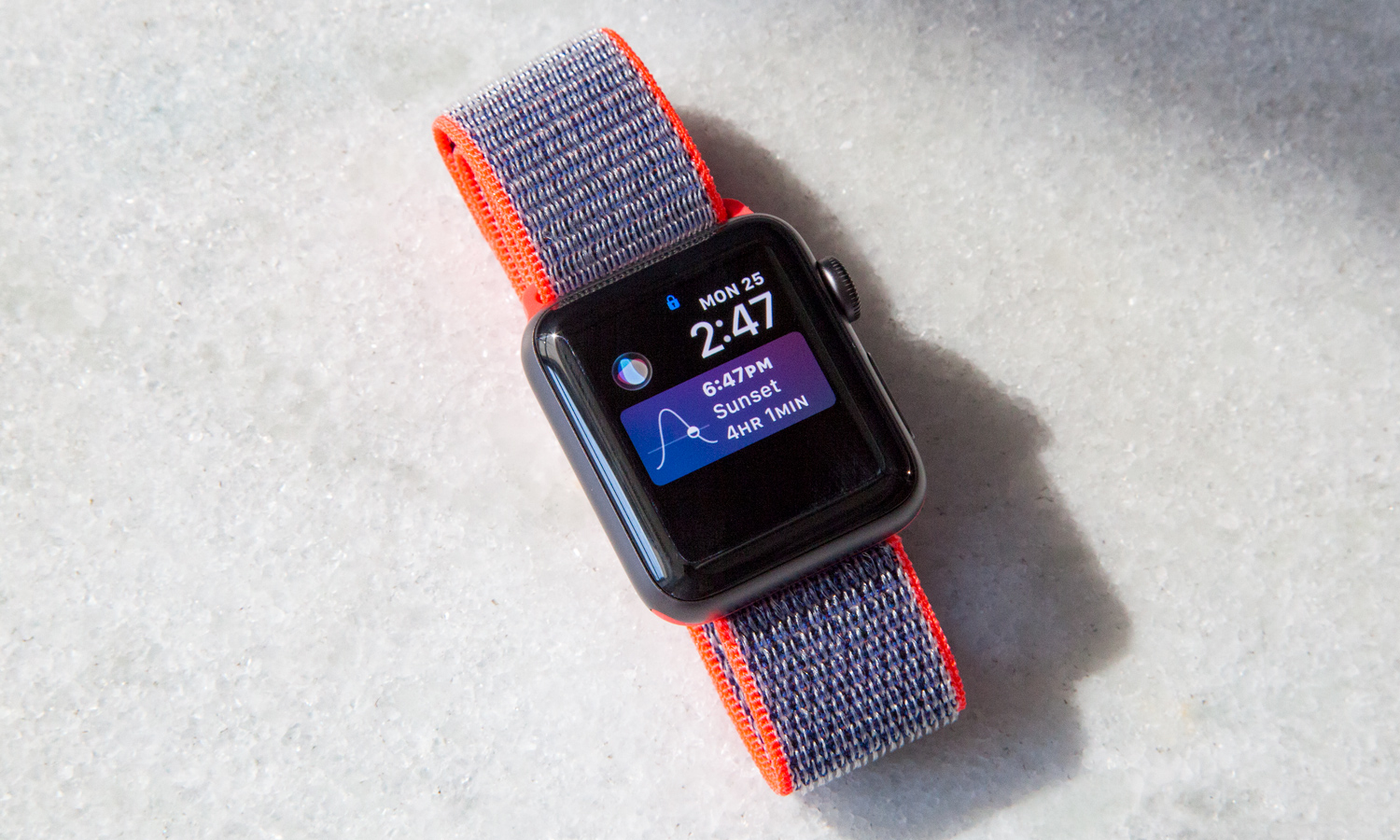
Apple Watch Series 3 fitness-tracking: Better than ever
Working out is the one use for which an LTE Apple Watch is perfect. There is nothing quite like lacing up my sneakers, pairing my AirPods to my watch and hitting the pavement with no phone weighing me down. (I love my iPhone 7 Plus, but it feels like a giant barnacle attached to my body when I'm running.) Knowing that I can still get text messages and important notifications on my watch is reassuring.
Both Series 3 models, the one with cellular and the one without, sport a new barometric altimeter, which is a handy new data point for measuring elevation. That's useful for hiking and skiing as well as actual stair climbing. I knew I climbed a lot of stairs, considering almost all subway stations are located underground, but I never really tallied them up before. After I saw that I powered through 21 flights of stairs after a Mets game at Citi Field, I realized why I was so tired (and promptly took a nap).

Otherwise, the Series 3 with LTE has the same great fitness-tracking features that the Series 2 and Series 3 without cellular connectivity have, including accurate built-in GPS and an equally accurate heart rate sensor. Apple's watchOS 4 upgrade put more fitness-tracking features on all of its smartwatches, such as alerts when your heart rate is elevated and support for high-intensity, interval-training workouts. A feature that connects your watch to your gym's equipment for more accurate exercise tracking is slowly rolling out.
Apple has added a feature to the LTE watch that allows you to turn off cellular connectivity and the heart rate sensor to save battery life, which is great if you're going on a long run. I toggled on this feature for one run, but if you do this frequently, it makes it kind of pointless to own an LTE watch. But with or without LTE, the Apple Watch 3 is one of the best fitness trackers.
Series 3 music: The missing piece falls into place
Apple touted the Series 3's music-streaming capabilities in a series of TV commercials ahead of the device's launch. Yet Apple Music streaming took weeks to arrive on the watch.

The good news: Now that it's here, Apple Music streaming over cellular is an incredibly unique feature that actually makes me feel like I could ditch my phone someday. Apple packaged the streaming service in two apps: Apple Music, which requires a $10-per-month subscription, and Radio, a free watch app that anyone can use to stream songs. Streaming music makes the smartwatch experience almost — dare I say it — magical.
There was no lag as I launched a radio station in my house, where my watch was connected to my iPhone, or when I moved out of Bluetooth and Wi-Fi range as I set off on my run. Apple Music never stuttered or dropped, even as I ran through Brooklyn's massive, tree-filled Prospect Park.
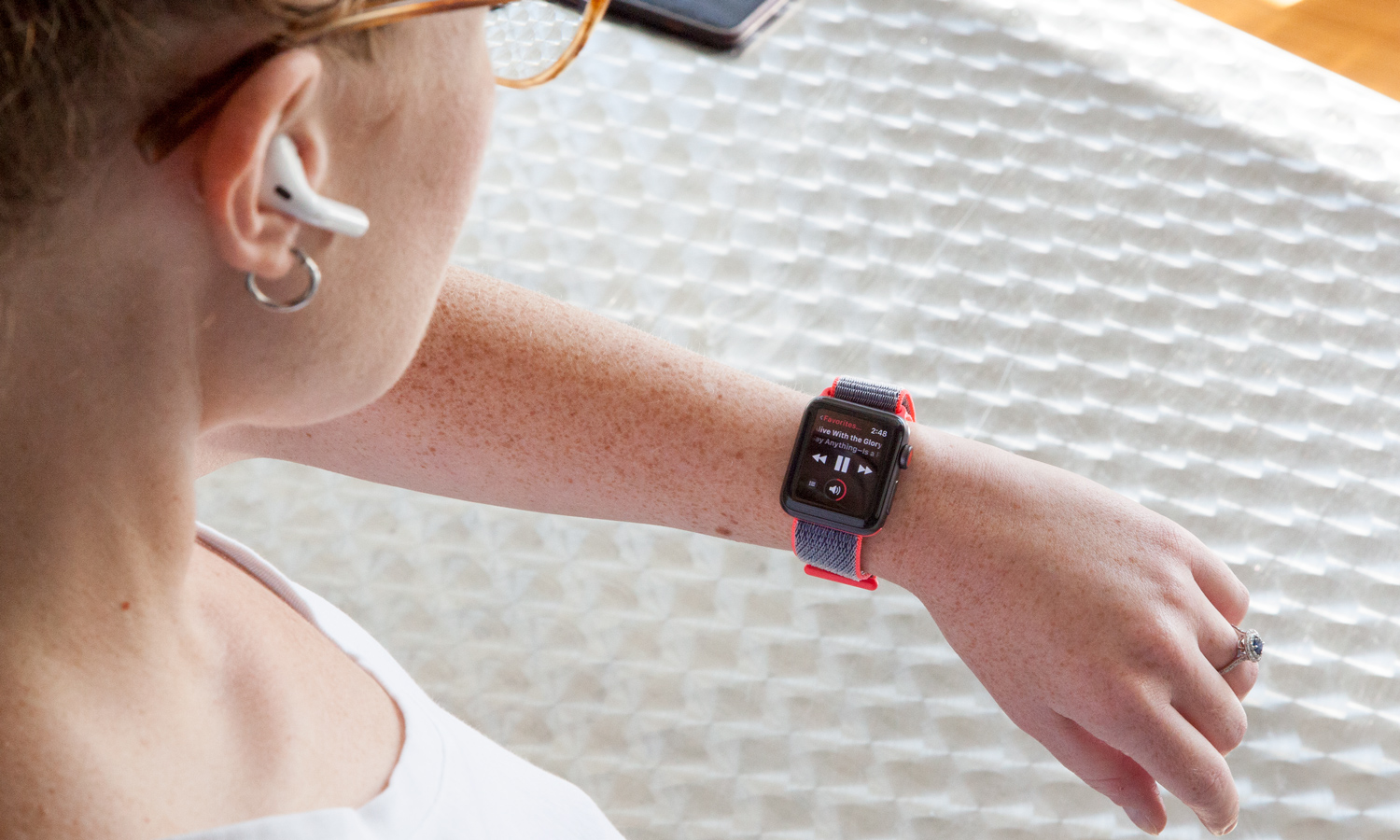
I was hoping that the Series 3 would also support on-device podcast playback, but that hasn't happened due to limitations in watchOS 4, as Overcast developer Marco Arment details here.
I still have to carry my phone with me when I want to listen to podcasts on my commute, which I do every day. The watch does allow you to control audio playback and save music offline from Apple Music to listen to via Bluetooth headphones, but those features are neither new nor exclusive to the LTE model.
(Editor's note: With watchOS 6, you can stream podcasts and audiobooks over cellular. You can also store them directly on the watch for offline listening.)
Now that it's here, Apple Music streaming over cellular is an incredibly unique feature that actually makes me feel like I could ditch my phone someday.
Series 3 phone calls: Better with Bluetooth earbuds
Sure, you can phone home from your watch. But do you really want to? Making or taking phone calls from your wrist is something of a novelty, and you'll definitely tire of it. A pair of Bluetooth earphones, such as Apple's AirPods, elevates the experience — it's about as pleasurable as a phone call can possibly be.
When I first reviewed the watch, the device started to heat up after a few minutes of talk time. I actually had to end a 13-minute phone call because the watch became uncomfortably warm on my wrist. After the software update, I didn't experience those overheating issues.
The watch's call quality is comparable to that of my iPhone, and when it's paired with Apple's AirPods, talking on the watch is effortless. You will definitely look like you're talking to yourself without a phone in hand, but if you don't care about looking slightly awkward in public, then proceed.
For quick check-ins with friends or significant others, the watch will do just fine.
Why you don't need LTE
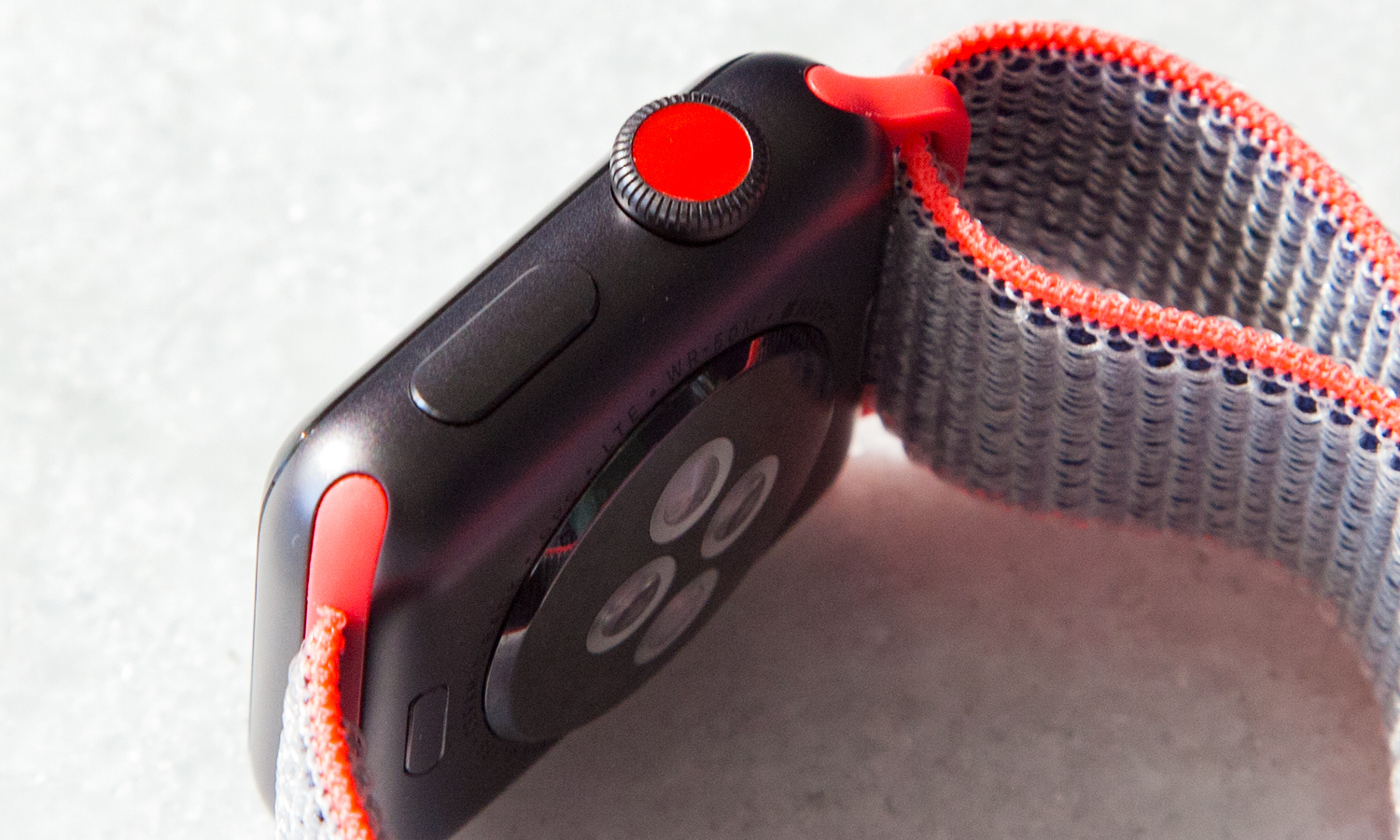
When the watch is connected to a cellular network, it can quickly make calls, respond to messages using voice dictation or the Scribble handwriting-to-text feature, and activate Siri to answer questions or pull up directions. I experienced some issues downloading emails from my Gmail account in Apple's native Mail app on cellular, and there were periods of time when the cellular connection would unexpectedly drop (denoted with a red X at the top of the display), even when I hadn't moved.
The things I love most about the Apple Watch have nothing to do with its LTE capabilities. I appreciate being able to save music offline to listen to with AirPods, use Apple Pay to buy stuff without carrying my wallet around, glance at the Siri watch face to get an overview of my day and track my daily activity in the Workout and Activity apps. But I can do all those things with a Series 3 that doesn't have LTE, and those models start at $329. In fact, you can get all of these features with every watch Apple sells.
Series 3 vs. Series 5
The Apple Watch Series 3 is more affordable now that the Series 5 is the newest watch in the lineup. But the Series 5 also has bells and whistles that the Series 3 can't match, including a larger, more immersive always-on display, built-in compass, faster processor, and advanced heart health features such as an FDA-cleared ECG app for taking on-the-go electrocardiograms and a passive atrial fibrillation alert that monitors your heart's rhythm in the background.
If display, speed and medical-grade health features are essential, the Series 5 is worth the splurge. But if what you're after is a solid smartwatch that works well with your iPhone, then the Series 3 is just fine. Check out our in-depth Series 3 vs. Series 5 face-off here.
Bottom line
The Series 3 with LTE has had its problems, like the Wi-Fi software bug and launch-weekend carrier hiccups. But the watch has already improved by leaps and bounds, thanks to a software update that added streaming music and manual control over cellular and Wi-Fi connectivity so your watch doesn't get stuck somewhere between the two. Longer battery life will continue to be a struggle at this size, even though the Series 3 has a bigger battery than its predecessors.
There are moments when LTE makes the watch feel truly magical: receiving a text while I'm running with just the Apple Watch and AirPods, or downloading emails without a phone nearby after escaping the office to pick up lunch. But those moments aren't as frequent as I would like them to be. If you want the Series 3, get the non-LTE version, which starts at an affordable $199.
I can imagine a future in which a smartwatch can replace a smartphone for most of the tasks we use it for, but the Series 3 with LTE is not that future. At least not yet.
Credit: Shaun Lucas/Tom's Guide
Caitlin is a Senior editor for Gizmodo. She has also worked on Tom's Guide, Macworld, PCWorld and the Las Vegas Review-Journal. When she's not testing out the latest devices, you can find her running around the streets of Los Angeles, putting in morning miles or searching for the best tacos.
-
immense AT&T now offers a new unlimited data plan that included tethering (this was done in response to other carriers offering unlimited data). Your rep should have told you that.. I just swapped from my grandfathered plan to the new unlimited plan and saved $20/mo, got free HBO because I have DirecTV and 10GB/mo of tethering per device.Reply -
realnewscollective I picked up my Apple Watch on the launch date and haven't experienced ANY connectivity issues. Everything worked out of the box including cellular through my t-Mobile account. I upgraded from my Series 1 model without having to reboot or change any settings. Adding it to my t-Mobile account was seamless. They are offering 3-months free and then $10/monthly thereafter. I appreciate you well written review, however, I thought you should know my transition to Series 3 has been perfect.Reply -
pdgorton I collected my watch from Canberra yesterday, paired with my iPhone 6, read a (little ) bit of the user guide, connected with m Telstra account, and it all works as advertised. Delighted.Reply -
lumbee1 I have ordered the Series 3 + LTE, but the delivery time has been lengthened, not shortened. Still at least a month. Am considering getting the Apple Watch without LTE instead. But,, that seems anticlimactic. I am buying my first Apple Watch. It was the presence of LTE and newly found semi-independence that convinced me.Reply
I do think $10 per month on a shared plan is too much to charge for service. -
pdgorton Reply20233393 said:I have ordered the Series 3 + LTE, but the delivery time has been lengthened, not shortened. Still at least a month. Am considering getting the Apple Watch without LTE instead. But,, that seems anticlimactic. I am buying my first Apple Watch. It was the presence of LTE and newly found semi-independence that convinced me.
I do think $10 per month on a shared plan is too much to charge for service.
-
jasondavidmcgrath Great review overall, but I don't agree with your overall rating (lower than the non-GPS?) or the broad recommendation (depends on wants/needs). I can leave my phone at home and still catch an important call or text. I can leave the kiddos home, jog around the block without my phone, and they can reach me. This convenience does come with an extra cost, but that’s the reality of the situation in the wireless world. I think you have to adjust your expectation for this unique category. Certainly you can’t view it as a phone replacement ( how would that even be possible on the screen of this size?). I did have terrible activation issues with AT&T, but I think that is because I have a business account. That part was not cool. Thankfully that's in the past.Reply -
mugsy47 For those of us with budgetary constraints, I think the monthly carrier fee is closer to $14. $ 10 plus administrative fees, taxes, you get it. That’s another $170 a year.Reply
